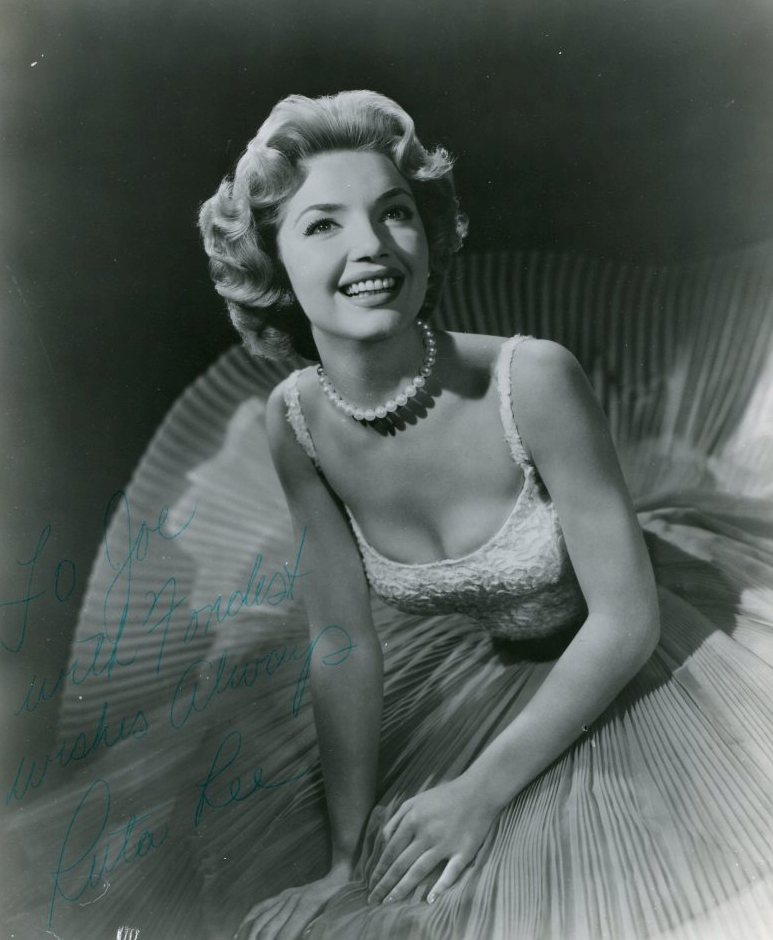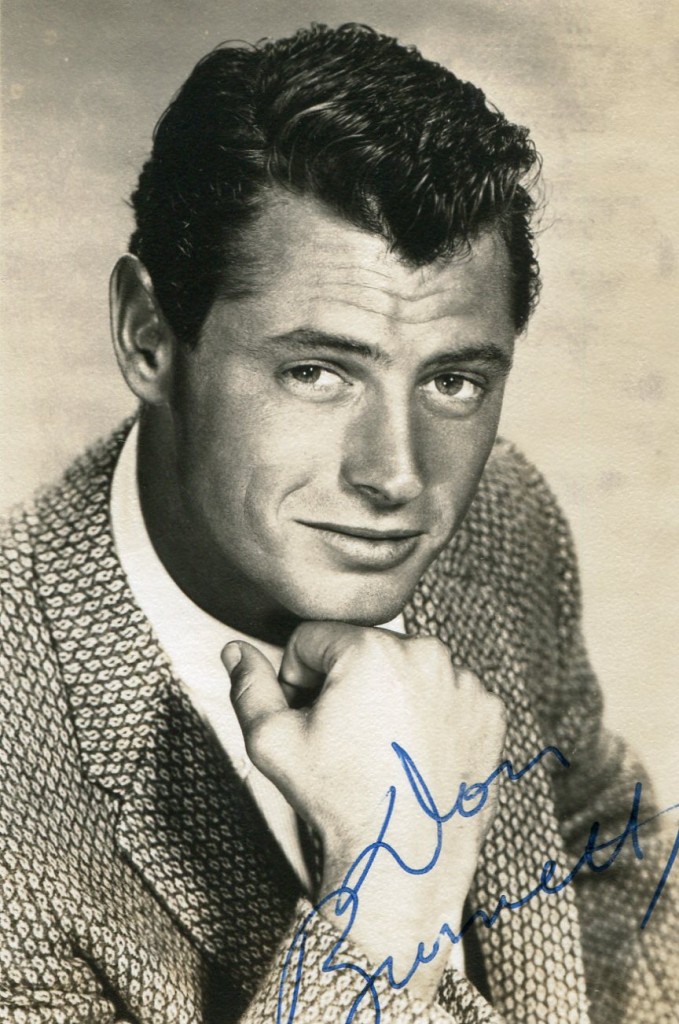
Katharine Helmond was born in Galvaston, Texas in 1928. Her films include “The Hospital” with George C. Scott in 1971, “The Hindenburg” again with Scott and “Family Plot” the last film directed by Alfred Hitchcock. Ms Helmond died in 2019 at the age of 89.
TCM Overview:
Most noted for playing outspoken, bawdy or endearingly ditzy matriarchs, actress Katherine Helmond enjoyed a career lengthier and more diverse than her beloved television roles might have suggested. After more than a decade of scattered parts in film and on television, the classically trained stage actress earned a 1973 Tony Award for her performance in Eugene O’Neill’s “The Great God Brown.” Following her work on TV movies like “The Autobiography of Miss Jane Pittman” (CBS, 1974) and “The Legend of Lizzie Borden” (ABC, 1975), Helmond landed her breakout role as the spacey Jessica Tate on the envelope-pushing sitcom “Soap” (ABC, 1977-1981), earning the actress her first Golden Globe in 1980. Tapping into her inner “grotesque,” Helmond collaborated with filmmaker Terry Gilliam for a pair of horrifyingly hilarious appearances in “Time Bandits” (1981) and “Brazil” (1985). Offbeat mothers seemed to be her bread and butter, and she successfully modulated her Jessica character for roles on “Who’s The Boss” (ABC, 1984-1992) and “Everybody Loves Raymond” (CBS, 1996-2005). Continuing to work well into her eighties, she lent her talents to such diverse projects as the animated Disney-Pixar blockbuster “Cars” (2006) and the gore and sex soaked vampire soap opera “True Blood” (HBO, 2008- ). Whether playing a delightfully addled socialite, a plastic surgery addict in the dystopian future, or a sexually voracious grandmother, Helmond brought her uniquely manic and seemingly inexhaustible energy to each and every role.
Biographies of Helmond never mention her father’s influence on her early years. Born Katherine Marie Helmond in Galveston, TX on July 5, 1928, she was raised by her mother, Thelma Malone, and grandmother. Withdrawn as a youth, she was assigned a role in a school play by the sisters at her Catholic school and discovered that acting provided a new way to express her emotions. The stage soon became her main passion, and she worked behind the scenes at her local theater before heading to South Carolina to attend the fundamentalist private college, Bob Jones University. While there, Helmond made her film debut in “Wine of Morning” (1955), a film version of the novel of the same name by the university’s president, Bob Jones Jr., who also funded the project. Her professional stage debut came in a New York production of Shakespeare’s “As You Like It,” and she was an active member of the state’s theatrical community throughout the 1950s and into the 1960s. In addition to her regular performances, Helmond operated a summer theater in the Catskills and taught acting classes at various universities. Television also afforded her an outlet for her talents. She made her small screen debut in an episode of “Car 54, Where Are You?” (NBC, 1961-63) in 1962.
The 1970s saw the true blossoming of Helmond’s career and the launch of her status as a TV favorite. A 1973 Tony Award as Best Supporting Actress in a production of Eugene O’Neill’s “The Great God Brown” signaled that she was a performer to watch. Her film career also began in earnest with supporting turns in “Believe in Me” (1971), a disturbing drama about drug addiction, as well as the Paddy Chayefsky-penned black comedy “The Hospital” (1971), “The Hindenburg” (1975) and Alfred Hitchcock’s final film, “Family Plot” (1976). However, television took the fullest advantage of her abilities, and she was put to excellent use as society ladies, mothers of all stripes and professional types in Emmy-winning projects like “The Autobiography of Miss Jane Pittman” (CBS, 1974) and “The Legend of Lizzie Borden” (ABC, 1975).
Helmond’s first turn as a series regular was something of a doozy. “Soap” (ABC, 1977-1981) was a primetime parody of daytime soap operas that left no hot button issue untouched in its pursuit of laughs. Helmond played Jessica Tate, the wealthier of two sisters whose extended and deranged families filled out the show’s massive cast of characters. Blissfully ignorant of the chaos that surrounded her, Jessica’s sole interest seemed to be sex, which she sought from her husband Chester (Robert Mandan) to no avail. Instead, she found relief in the arms of numerous men, including a private investigator (Robert Urich), whose murder lead to a first season cliffhanger concerning her innocence. Jessica later became involved with a South American dictator known as “El Puerco” (Gregory Sierra) and found herself on the wrong end of a firing squad. Unfortunately, fans of the show never got to see if she escaped this demise, as the show was unceremoniously cancelled in 1981. Viewers who tuned into its more successful spin-off, “Benson” (ABC, 1979-1986), received something of an answer about Jessica’s fate in a 1983 episode featuring Helmond as Jessica’s wandering but still confused spirit.
Save for Billy Crystal, Helmond’s career received the most positive impact from appearing on “Soap;” a four-time Emmy nominee and 1981 Golden Globe recipient for her work on the show, it made her a welcome presence for television viewers and producers, who sought her out for comic roles in their own projects. Most were generic TV sitcoms, though there were interesting roles as Rosemary Clooney’s mother in the dramatic “Rosie: The Rosemary Clooney Story” (CBS, 1982) and an episode of Shelley Duvall’s “Faerie Tale Theatre” (Showtime, 1982-87) as Jack’s mother in “Jack and the Beanstalk” (1983). The British seemed to appreciate her sense of humor as well, and she was well cast as the dithering wife of an ogre (Peter Vaughn) in Terry Gilliam’s feature film, “Time Bandits” (1982) as well as in the bizarre cult comedy “Shadey” (1985). The former was the first of several enjoyable big screen collaborations with Gilliam, the best of which was “Brazil” (1985), which cast her as Jonathan Pryce’s scheming mother, whose addiction to plastic surgery reached absurdist limits. In addition to her acting roles, Helmond enrolled in the American Film Institute’s Directing Workshop, which led to her helming episodes of “Benson” and her next series, “Who’s the Boss” (ABC, 1984-1992).
Helmond returned to work as a series regular on “Boss,” the popular sitcom with Tony Danza and Judith Light as a housekeeper and his employer, respectively. Helmond effectively stole all of her scenes as Light’s uber-confident and man-hungry mother Mona, who garnered the lion’s share of the laughs with her outrageous statements. Though at first blush a kissing cousin to Jessica Tate, Mona was decidedly more together than the “Soap” character and could even be counted on to provide some honest advice to Danza’s daughter (Alyssa Milano). She even opened her own ad agency with her daughter in later seasons. A ratings success during the majority of its network run, “Who’s the Boss” netted Helmond two additional Emmy nominations and her second Golden Globe in 1989. Though “Who’s the Boss” kept Helmond busy for nearly a decade, she remained exceptionally active in TV movies and the occasional feature. Chief among these big screen offerings was the underrated ghost story “Lady in White” (1988), which cast her as a tragic spinster with connections to a small town spirit, and the cult comedy “Inside Monkey Zetterland” (1993) as a former soap opera star facing unemployment. In 1995, she began a recurring role on “Coach” (1989-1997) as the eccentric, money-mad owner of a fictional football team that hires Hayden Fox (Craig T. Nelson) as its head coach.
In 1996, Helmond marked the first of several appearances on “Everybody Loves Raymond” (CBS, 1996-2005) as Patricia Heaton’s well-bred mother, who invariably came to loggerheads with Ray’s working class parents (Doris Roberts and Peter Boyle). Well paired with an impossibly tanned and beaming Robert Culp for these episodes, Helmond received a fifth Emmy nomination for a 2002 episode of the series. While on “Raymond,” Helmond could be found in numerous television movies and episodes, as well as the occasional feature, including a brief turn as a desk clerk in Gilliam’s surreal adaptation of “Fear and Loathing in Las Vegas” (1998) and as the voice of a Model T named Lizzie in Pixar’s mega-successful “Cars” (2006). Television continued to be her best showcase, and in the midst of her seventh decade, she successfully stole away such projects as “Mister St. Nick” (2005), which cast her as Mrs. Santa Claus, and as an veteran song-and-dance actress opposite Ernest Borgnine in “A Grandpa for Christmas” (2207). After a three-year break, Helmond returned to television with guest turns on the Everglades-based drama “The Glades” (A&E, 2010- ) and the “Who’s the Boss” redux, “Melissa & Joey” (ABC Family, 2010- ). She increased her output the following year when she once again gave voice to Lizzy in “Cars 2” (2011) and made appearances on such primetime series as “True Blood” (HBO, 2008- ) and “Harry’s Law” (NBC, 2010- ) opposite Kathy Bates.




























































































